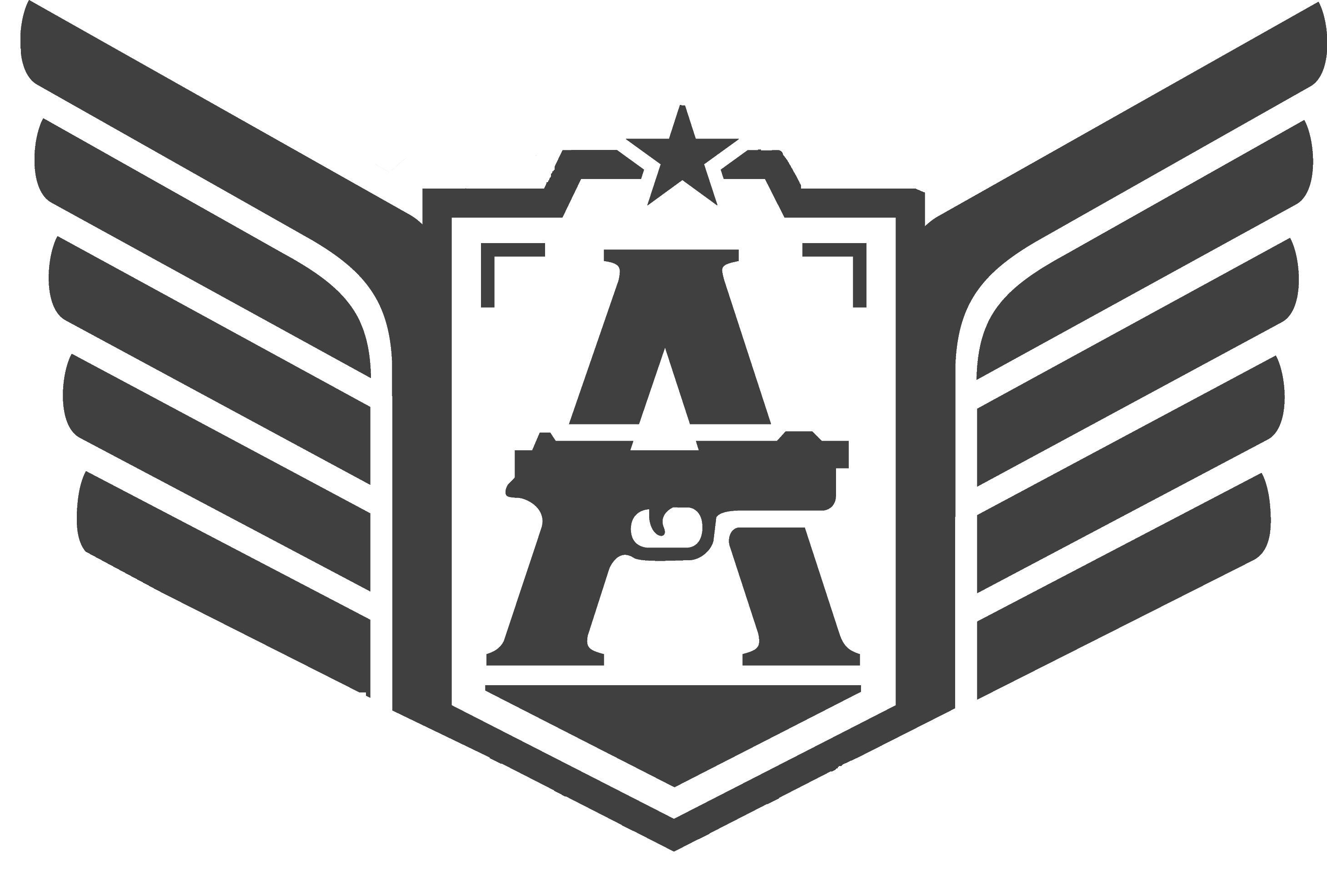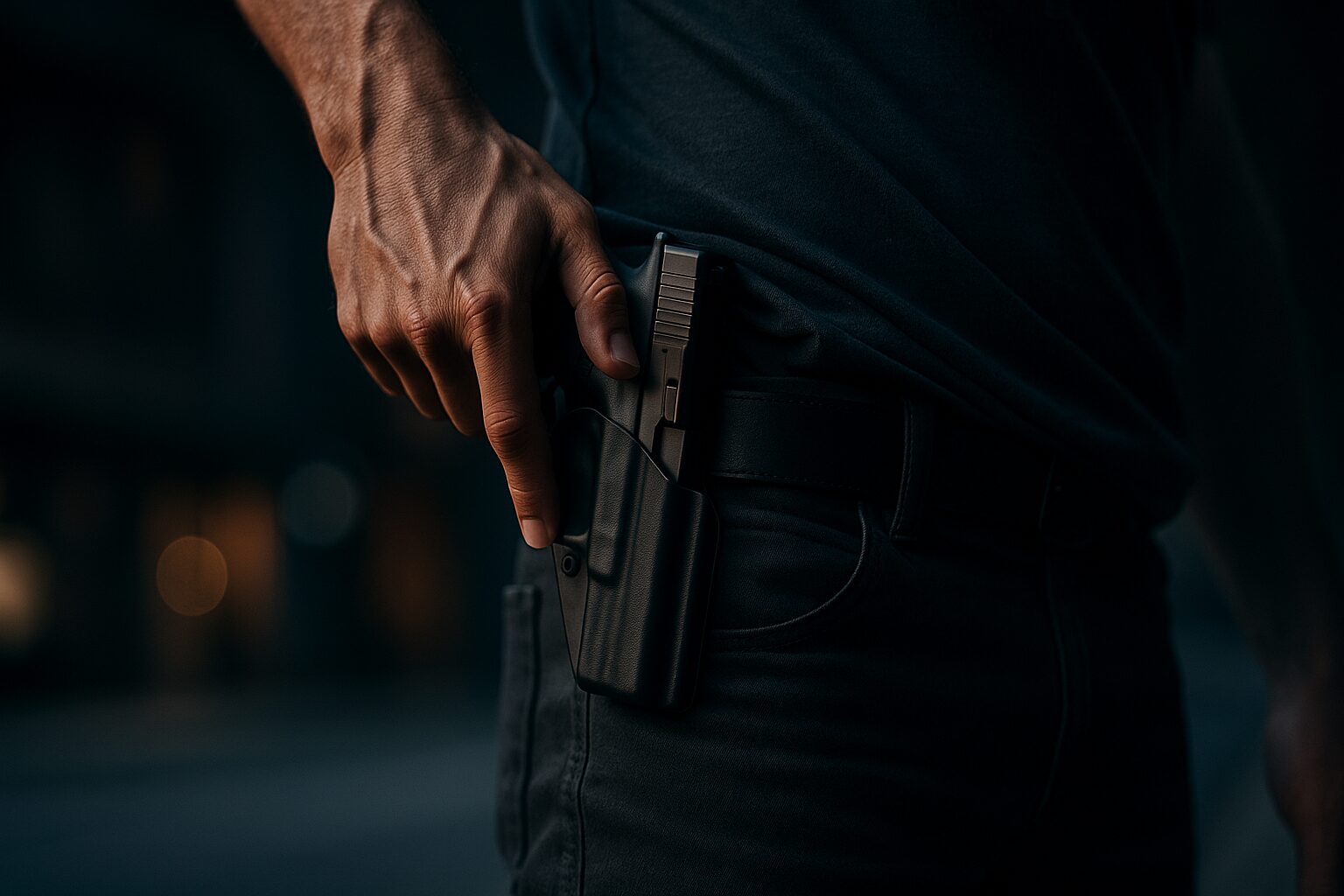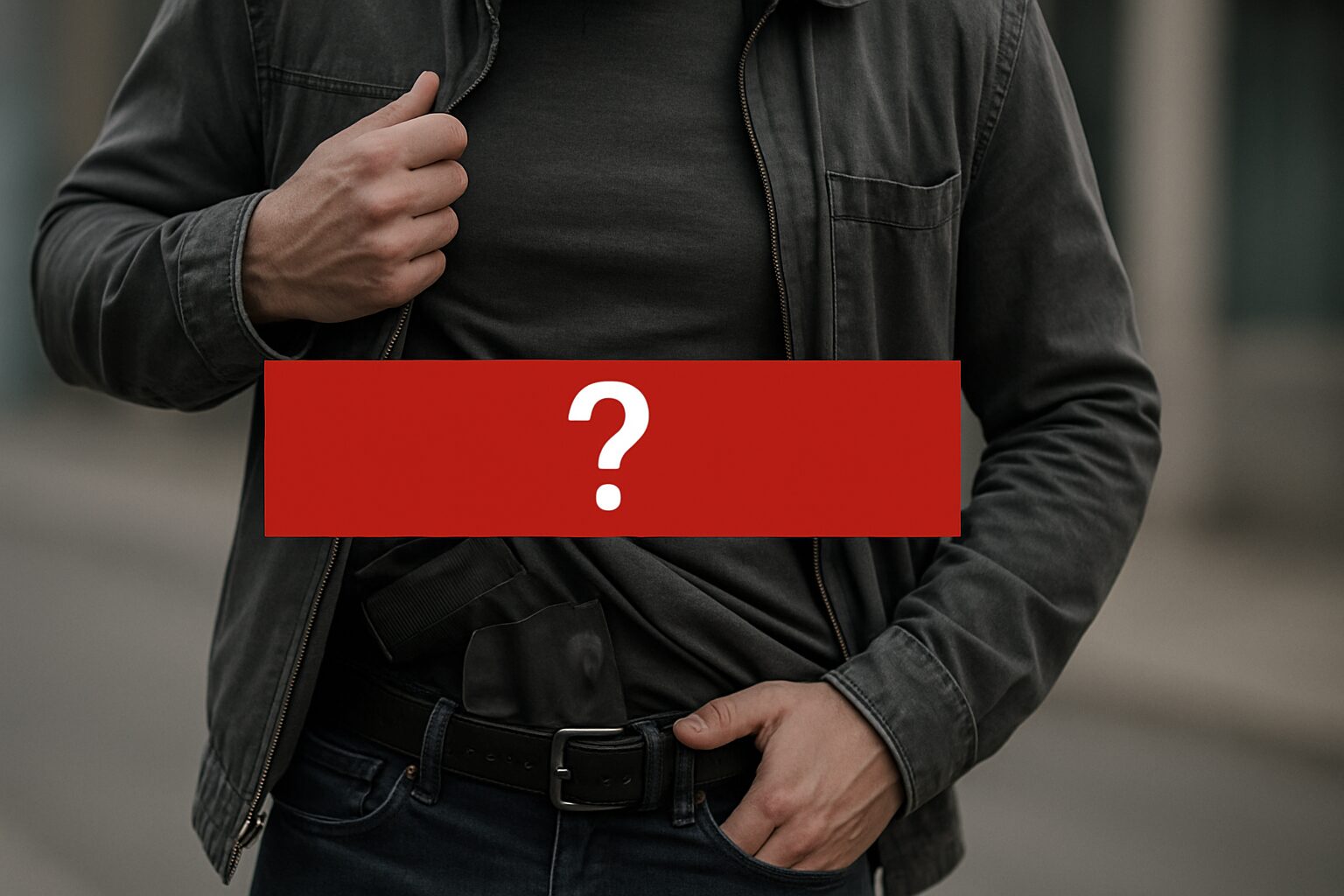Lucas Silveira
Carrying a firearm is a decision that involves consciously choosing the pistol’s level of readiness — i.e., how “ready” it will be to fire. To facilitate communication and instruction, the shooting community uses a system of conditions (C0, C1, C2, C3 — and occasionally C4) that describe the state of the magazine, the chamber, and the firing mechanism. These definitions help instructors and operators standardize procedures, assess risk, and make tactical decisions.
The official position of ABA Intl is clear and emphatic: pistols intended for carry should be striker-fired and kept in C0. ABA Intl recommends that everyday carry pistols always be in condition C0 (round in the chamber, firing mechanism engaged — ready to fire), and that C3 (empty chamber, magazine inserted) not be used as a carry condition — C3 should be employed only for safe transport between locations (for example: from the transport case to the training range, or between storage facilities), when circumstances require reducing the risk of handling or inspection.
Practical definitions (summary)
- C0 — Condition Zero: round in the chamber and firing mechanism engaged; no manual safety applied. Firearm ready to fire immediately.
- C1 — Condition One: round in the chamber, firing mechanism engaged, with manual safety/safeties on (when the gun has them).
- C2 — Condition Two: round in the chamber, firing mechanism disengaged (hammer/striker not cocked).
- C3 — Condition Three (“patrol ready” / “Israeli carry”): empty chamber, magazine inserted — to fire you must rack/cycle the slide.
- C4 — Condition Four: firearm completely unloaded (no magazine and no round in the chamber) — used for storage, inspection, and controlled environments.
ABA Intl recommendation — rationale and implications
Main recommendation:
- Pistols for concealed/everyday carry should be striker-fired (the typical design of modern striker-trigger platforms) and carried in C0 at all times.
Why:
- Mechanical simplicity and predictability: modern striker-fired pistols have repeatable mechanisms and are designed to be carried with a round in the chamber safely when the operator trains with discipline.
- Minimum reaction time: C0 removes the need for extra manipulation (racking/arming) for the first shot — a critical difference in self-defense scenarios with very narrow time windows.
- Clear operational flow: training consistently to one carry condition prevents confusion under stress. If platform and training assume C0, the draw, presentation and finger placement operate as a single, trained sequence.
- Training and safety standards as prerequisites: ABA Intl conditions this recommendation on formal training — carrying a striker-fired pistol in C0 demands absolute handling discipline (finger off the trigger until on target, muzzle awareness, threat assessment updates, secure storage when not being carried).
Note on C3:
- C3 is acceptable for transport (for example: moving the firearm unloaded from storage to the range, or when moving in aircraft/vehicles under applicable rules), but it should not be adopted as a routine carry condition for concealed or personal defense, because it adds time and extra steps for the first shot and therefore compromises readiness in situations that demand immediate reaction.
Exceptions and practical observations
- Revolvers, firearms with specific mechanisms, or highly particular legal/operational situations may require different handling; ABA Intl’s guidance primarily applies to striker-fired semi-automatic pistols intended for personal carry.
- Where local law or institutional policy requires unloading or specific transport conditions (events, courts, designated locations), local rules prevail and must be followed.
Advantages and disadvantages (in light of ABA Intl’s position)
Carrying a striker-fired pistol in C0 (recommended):
- Advantages: maximum reaction time — immediate fire; single, trainable operational flow; reduced chance of error under stress once the routine is established.
- Disadvantages: requires strict discipline in handling and secure storage practices; human-factor risks must be mitigated with training and procedures.
C3 for transport (acceptable only for movement):
- Advantages: reduces the risk of accidental discharge during movement; eases inspection and compliance with transport rules.
- Disadvantages: not suitable as a carry condition for personal defense — it increases time to first shot and requires an extra manipulation in a crisis.
Factors that should guide the choice (applicable even with the recommendation)
- Training and repetition: the carrier must train draws, presentation, trigger manipulation and disengagement procedures consistently. ABA Intl emphasizes continuous training for anyone following the C0 recommendation.
- Type of mission and daily routine: professionals with distinct rules (bodyguards, escorts, private security) should align the condition with their organization’s doctrine. It’s not uncommon for institutions to lower standards by hiring underqualified staff or lacking proper equipment.
- Local laws and rules: compliance with legal and safety regulations is mandatory — when law requires unloading or transport in C3/C4, comply.
- Firearm & equipment: choice of firearm, holster and accessories (a retention holster is recommended for open/visible carry) must support safe and discreet carry in C0.
Training and safety procedures recommended by ABA Intl
- Train draws and holster presentation under stress and from different carry positions.
- Repeat trigger-manipulation drills with emphasis on keeping the finger off the trigger until the firearm is pointed at the target.
- Implement consistent check and storage routines: when storing the firearm (at home, in a vehicle, in a safe), follow your established procedures; when carrying, secure the pistol in a suitable holster that prevents accidental discharges.
- Run low-visibility and one-handed scenario simulations — to ensure the carrier can handle contingencies without compromising safety.
- Provide ethics and proportional-force training — knowing when and how to use the firearm is as important as marksmanship.
Practical conclusion (summary)
- ABA Intl’s position is straightforward: for personal carry, pistols should be striker-fired and carried in C0. This maximizes readiness and establishes a single operational standard for training.
- C3 is not a smart carry condition — it should only be used for transport between controlled locations.
- Any choice requires consistent training, suitable holsters and procedures, and, if reasonable, strict compliance with local laws.


